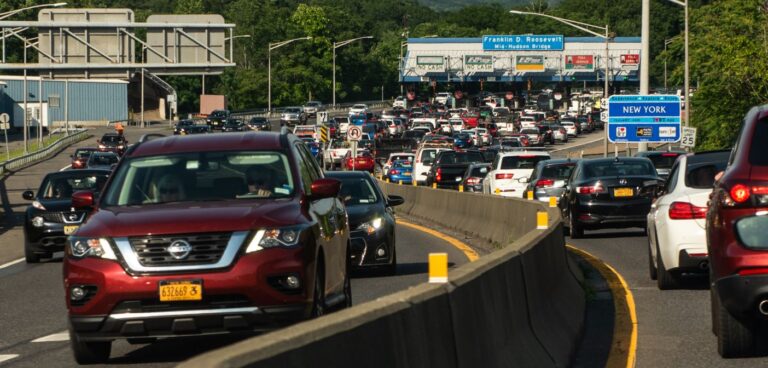Cashless tolling has been implemented at the Mid-Hudson Bridge, connecting the hamlet of Highland and the city of Poughkeepsie in New York State.
The milestone marks the completion of the implementation of cashless tolling across the five-bridge system operated by the New York State Bridge Authority (NYSBA), and brings all New York State-run toll roads under cashless tolling.
“When the Mid-Hudson Bridge opened in 1930, then-governor Franklin Roosevelt extolled the economic and social benefits that this bridge and others like it would bring to the Hudson Valley and the rest of New York State,” said current New York State governor Kathy Hochul.
“Today, much like during FDR’s time, New York is making critical investments to strengthen our infrastructure network for the needs of the 21st century, including the implementation of cashless tolling.
“This milestone is a testament to our commitment to the continued enhancement of New York’s transportation network, and with all of our state-run toll roads operating with cashless technology, New Yorkers can now enjoy the benefits of safer, more seamless travel on our bridges and highways.”
Motorists can now travel non-stop under a gantry with sensors and cameras that read E-ZPass tags and take license plate images. Vehicles with E-ZPass tags will be automatically charged and vehicles without E-ZPass tags will have their license plate image captured and a toll bill mailed to the registered owner of the vehicle via Tolls by Mail NY.
The overhead gantry with cashless tolling equipment was constructed on the west approach to the bridge, just west of NYSBA’s headquarters. As with all Hudson River bridges, tolls are collected from eastbound travellers only.
The current toll booths are scheduled to be removed imminently, thereby ensuring that the roadway remains clear of obstructions to allow safer and smoother movement of traffic. While the toll booth demolition is taking place, drivers will be routed through the current toll plaza area.
According to NYSBA, in addition to smoother and safer travel, the move to cashless tolling will also result in environmental benefits due to less engine idling and wasted fuel, leading to fewer vehicle emissions.
Cashless tolling is now in effect at all five spans operated by NYSBA, namely the Bear Mountain, Newburgh-Beacon, Mid-Hudson, Kingston-Rhinecliff, and Rip Van Winkle bridges. The Newburgh-Beacon Bridge was the first to go live with cashless tolling on 7 July 2021. The other four bridges went live incrementally over the subsequent months, with the Mid-Hudson Bridge being the last to make the switch.
In recent years, MTA Bridges & Tunnels and the New York State Thruway Authority (NYSTA) have implemented cashless tolling, with NYSBA the latest state entity to completely convert to the new system.
In 2021, NYSTA announced the completion of its Cashless Tolling Design-Build Project, which marked the final phase in the conversion to cashless tolling on the entire 570-mile Thruway system. The final phase of the project featured removal of 230 individual toll booths and reconstruction and realignment of 52 former toll plaza locations on the Thruway’s former ticketed system.
You can learn more about the key trends and challenges affecting senior decision-makers who have responsibility for tolling, intelligent transportation systems and road pricing in the USA at the first-ever Road User Charging Conference in Miami, on 13-14 June 2022. Click here for more information.


